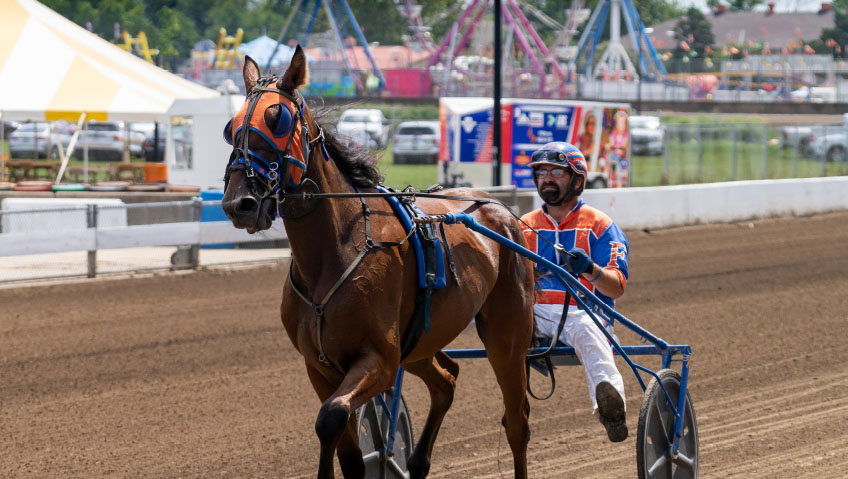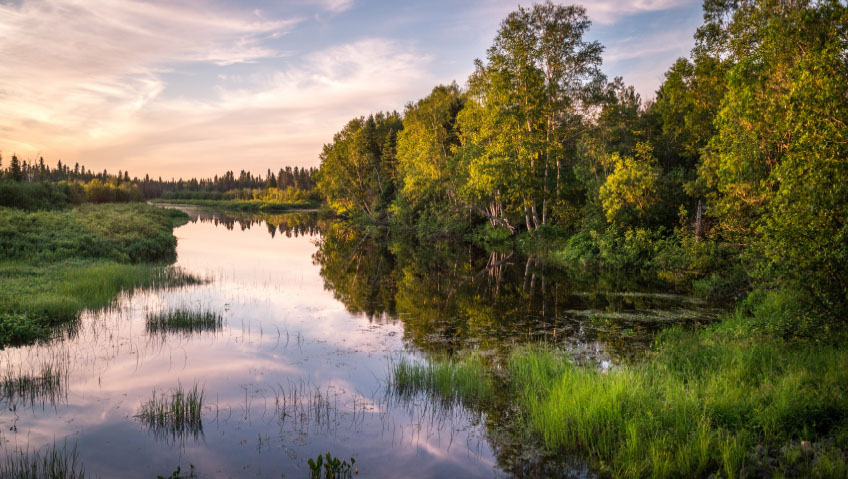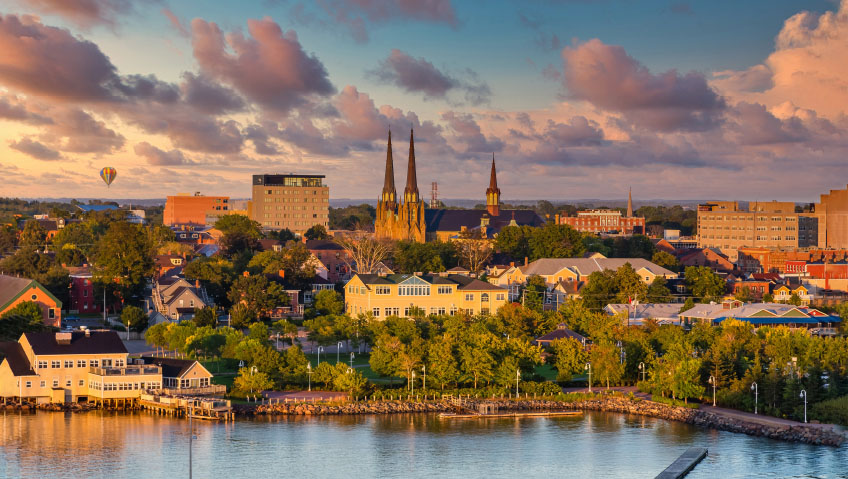The Illinois State Fair is an annual event that showcases the best Illinois has to offer. Every August, hundreds of thousands of people flock to the fair to get a corndog, ride the Giant Slide, and see the iconic butter cow, but this 366-acre campus has so much more to offer than the standard fair fare.
While the fair is an experience not to be missed, the Illinois State Fair has found a way to be a permanent and invaluable member of the community, particularly in times of need. For instance, during the pandemic, it became a site for vaccination and testing clinics. It also offers a farmers market to improve community access to fresh food and serves as a vehicle to promote the state’s number one industry: agriculture.
A rich history
Since the 1800s, the Illinois State Fair has served as a platform for the state to promote its primary industry and economic driver while bringing affordable entertainment to the people of Illinois, as well as the many visitors from outside the state and country each year.
“The Illinois Department of Agriculture’s oversight of the Illinois State Fair and Fairgrounds are a testament to the importance of agriculture in Illinois,” says Illinois Department of Agriculture Director Jerry Costello II. “In addition to the annual fair, our state fairgrounds showcase Illinois’ number one industry throughout the year through livestock and horse shows and our annual Illinois Products Expo. These events bring hundreds of thousands of visitors to our fairgrounds every year and the continued investment in the infrastructure of the fairgrounds is a testament to the priority and commitment to our agriculture community by this administration.”
“Many fairgoers think of corndogs and concerts and carnival rides when they think of the state fair; at the heart of it all, we’re an annual showcase for Illinois agriculture, so showcasing our state’s number one industry will always be a long-term goal,” shares Illinois State Fair Manager, Rebecca B. Clark.
She notes, “Back then, the fair was designed to promote not only best practices in agriculture and raising livestock, but also displays of improvements of labor and industry, education, and science. Today, the Illinois State Fair continues to showcase Illinois’ agricultural history, our educational values, and the future of our state’s number one industry while also providing top-notch, affordable, family-friendly entertainment.”
Throughout its rich history, the Illinois State Fair has called twelve different cities in Illinois home since it was first held in Springfield in 1853, where it eventually returned in 1894 and has remained for over 100 years. The Fairgrounds have hosted what would become remarkable moments in history, from Senator Stephen Douglas’ speech and Abraham Lincoln’s rebuttal the following day in 1854, to President John F. Kennedy addressing Illinoisans in the iconic Coliseum.
The first permanently located fair took place in September 1894 and since that time the Fairgrounds have changed significantly. With several enclosed and open-air facilities, it is the ideal venue for concerts, races, livestock shows, and rodeos, as well as public and private events including weddings, conferences and conventions, trade shows, and so much more.
The Fairgrounds
With over 150 buildings and facilities including the world’s fastest dirt track, four indoor arenas and an outdoor arena, a grandstand, and countless barns and stalls for livestock and horses, there is a great balance of new and historic buildings on the 366-acre Illinois State Fairgrounds.
One of the most iconic buildings is The Coliseum, constructed in 1901. Clark explains that many consider it to be the “Crown jewel of our Fairgrounds.” The large, three-story oval-shaped amphitheater is regarded for its pristine footing, making it perfect for equestrian, canine, and livestock exhibitions.
Its range of barns, paddocks, and pavilions, as well as its livestock centers, have made the Fairgrounds renowned countrywide for its ability to host large-scale agricultural events. It also boasts a 300-site campground that can accommodate motor homes, RVs, fifth wheels, and tents from April 1 through October 31.
As a historic fairground on the national registry, significant investments are being made. Clark explains that thanks to investments from Illinois Gov. J.B. Pritzker’s Administration, the Illinois State Fairgrounds are in the middle of an $80 million capital improvement plan, making key structural improvements and addressing infrastructure needs like roads and other maintenance to enhance accessibility and function.
“Being located on historic fairgrounds where buildings date back to the Teddy Roosevelt Administration, the upkeep is critical,” explains Clark. Referred to as a “game changer,” the investment will afford year-round use of the facility—and just in time for the 2024 Northern American Belgian Championship, an international show that will see around 800 draft horses, as well as the 2025 Clydesdale Show, the World Palomino Show, and more.
More than a midway
Having wrapped up this year’s festivities, the Illinois State Fair team is gathering feedback and already working hard on upcoming events for 2024. Next year, the fair will run from August 8 to 18 and as always, will be kicked off with the annual Twilight Parade, a Springfield tradition.
“We have an Ag Day breakfast where we celebrate the achievements of our state’s number one industry, and we have two carnivals, a carnival that is geared toward older kids and a smaller carnival that is geared toward younger kids. We host five days of harness racing, two days of auto racing, truck and tractor pulls, demolition derbies, monster trucks, and we have a Veteran’s Day celebration each year,” Clark explains.
“Our entertainment lineup definitely attracts visitors from throughout the Midwest and our competitive and livestock events are pulling the best and the brightest to compete on the largest stage in the state for top agricultural prizes,” she adds.
The 11-day event even draws people from around the world. Its newest attraction, the Route 66 Experience, is one of the biggest draws for international visitors and pays tribute to the historic highway on which the Fairgrounds are located.
“We are one of the few, if not the only fairgrounds located on Route 66, so our community recently came together to build a new exhibit that’s dedicated to the mother road, and it really showcases all the great things that you find on Illinois’ path of Route 66 from Chicago to St. Louis,” including historic giants like the Muffler Man and a neon sign park that is ripe with nostalgia.
“It’s really a breathtaking view of Americana. The exhibit is open year-round. It’s a self-guided tour that is already attracting international visitors and will continue to grow, especially as we head into the Route 66 centennial celebration in 2026,” says Clark of an experience that is not to be missed.
Creating an experience
In an age where entertainment options are a dime a dozen, the Illinois State Fair continues to work hard to pay homage to its roots while modernizing to remain relevant. The goal is to be an affordable, accessible source of entertainment in a highly competitive market.
Clark acknowledges, “Entertainment dollars are stretched and so it’s really important that we are offering a new and relevant experience that makes families want to spend those precious entertainment dollars at our venue. Making yourself relevant while keeping all the staples is a delicate balance, but if you’re not staying relevant, you’re really losing out.”
To remain Illinoisians’ first choice for summer fun, the Illinois State Fair is bringing in fresh new ideas to appeal to today’s fairgoers. The newly introduced Selfie Gallery was a smash hit and offers 12 individual photo booths and two group photo booths for people to enjoy and share with social media, commemorating their time at the fair. It must be working, too, because the fair saw more than 700,000 visitors last year, which exceeded pre-pandemic attendance records.
“Not only have we now rebounded from COVID levels, [our competitive events are] surpassing levels that we haven’t seen before, but with that comes a need to improve our facilities to accommodate larger shows,” Clark explains.
Undoubtedly, with this level of impact, the Illinois State Fair and Fairgrounds are a major economic driver for the local and state economies, but it is more than just a revenue generator. It is a premier public facility in the state—a place where people are having experiences and making memories year-round that will last a lifetime thanks to the sponsors, the staff, and the volunteers who make it possible each year.
Looking ahead
As always, people should stay tuned for the carnival midway lineup. It promises many of the same fan favorites that people have come to love with new and exciting additions that will elevate the offering for all to enjoy.
The Illinois State Fair adopted a Sensory Friendly Fair initiative that creates a safe space for individuals with sensory processing disorders. The initiative began in 2023 and will continue to grow to make the fair accessible and welcoming to all.
“Last year we launched a Sensory Friendly Fair initiative and we’re looking forward to growing and improving that initiative in 2024. Recognizing that the fair can be overstimulating and overwhelming for some individuals, the Illinois State Fair has created a designated area on the fairgrounds to aid individuals and families who need a moment to regroup. Coupling this with modifications to select programming in order to create a softer, more calming environment for children and adults who suffer from sensory processing sensitivities, the Illinois State Fair charted a path to increase accessibility and inclusivity,” Clark shares.
Next year, with more investments planned and newer, innovative ideas taking shape, the Illinois State Fair will continue to surpass expectations as a stage for the state’s history and culture to be showcased and a fun, affordable, family-friendly venue for countless forms of entertainment, while also serving as an invaluable part of the local and state economy and community.






